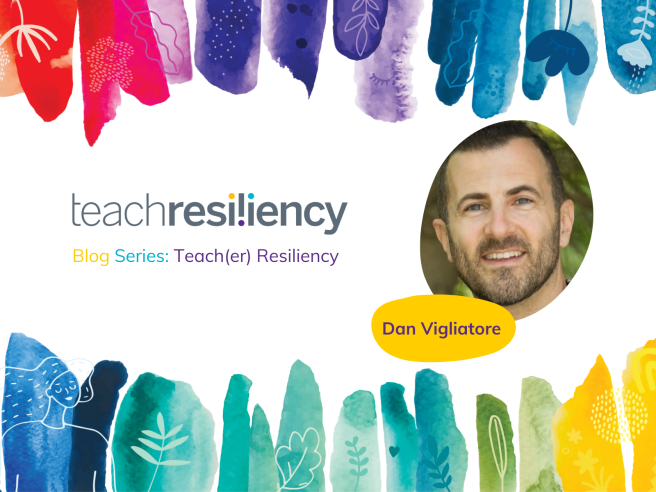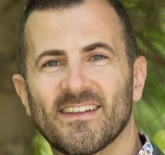Teach(er) Resiliency Blog Series: COVID-Fatigue and Hitting the Pandemic Wall - What Can We Do to Help Persevere?

Teach(er) Resiliency Blog Series: COVID-Fatigue and Hitting the Pandemic Wall - What Can We Do to Help Persevere?
The feeling of excitement was in the air as the Holiday break was quickly approaching. I was looking forward to having a somewhat ‘normal’ Christmas gathering with my family when, unexpectedly, I was notified that I would have to self-isolate due to a COVID-19 exposure. Just like that our holiday plans were derailed and I had two heart-broken daughters who could not see their family over Christmas. After persevering up to this point throughout the pandemic, it was in this moment that I effectively hit the “pandemic wall”.

Hitting the “pandemic wall” seems inevitable as we have been on a roller-coaster ride between feeling hope and despair – and many emotions in between. Teachers, students, and parents were provided with milestones that we all aspired to reach. We’ve experienced lockdowns, vaccine rollouts, new variants, and restrictions that consistently change. I have found myself creating milestones like “If the numbers of confirmed cases reach X” or, “If we can get past the winter break or to the summer, it will get better”. Creating milestones can be seen as a form of coping, but the feelings of disappointment when they are not reached time and time again leads to burn out – and hitting the pandemic wall.
So what are some of the causes of my collision with the pandemic wall?
Short Recovery Seasons
Summer vacation for teachers is a time to refresh and rejuvenate for the next school year. However, over the past two summers, many teachers have not been able to take time off or distance themselves from COVID-fatigue. With updates on restrictions and public health training over the summer, disconnecting was a very difficult task. For myself, my resiliency was challenged as I began to again question my own teaching abilities.

As educators, starting the school year while not at our best doesn’t lead to a very positive environment and therefore students ultimately suffer. A survey of 1300 Canadian teachers, 44% indicated that they were worried about their mental health in June, and by October that number spiked to 69% with 37% describing themselves as “barely coping” or, “not coping at all” (Canadian Teachers Federation, 2020).
We’ve been following the same restrictions and experiencing school closures and/or online learning periods for multiple school years. The start of the 2021-2022 school year had teachers navigating the same stressful waters as the year prior. Personally, I felt my resiliency being tested once again as I began to worry about entering an unsafe working environment and the effects it may have on my students and my own family. I questioned everything from my abilities as a Health & Physical Education teacher to the commitment of others adhering to safety protocols. I asked myself constantly, “Is this what I signed up for?”.
There are so many behaviours we can adopt to help alleviate the negative effects of COVID-fatigue. Dr. Scott Lear, Canada’s Heart and Stroke Foundation Chair in Cardiovascular Prevention Research, explains that occasionally avoiding media, taking care of one’s body, making time to unwind, and connecting with people, can be very effective in helping combat against hitting that pandemic wall (Lear, 2020). I’ve made a commitment to myself to try to follow these suggestions, and they really have helped me become more resilient and deal with the stress, fear and frustration.

But I still felt like something was missing. For me, having role models for resiliency in my life is what has helped me to build the knowledge and skills I need to be well. Connecting to positive role models that have overcome adversity and have demonstrated resilience was central to providing me with the motivation to get to the other side of the pandemic wall.
My Role Models for Resiliency
A positive role model that I have had for the past 18 years has been my wife, Rachel. She is a loving wife and mother of our two amazing young girls. She also is the head guidance teacher of an inner city secondary school in Toronto, Ontario. Yet, she has always figured out a way to stay on top of things and be there to help loved ones and students succeed. So to witness her ability to be such a great teacher for her students and a great parent for her daughters and all this during a pandemic has really helped me stay in control of my own emotions and take each day as it comes.

Her perseverance and passion to become a better guidance teacher and parent continued as she challenged herself to go back to school and build on and expand her professional and familial capacity. Rachel was open and honest with her experiences. She had bad days but modeled to us that it was okay to fail or to struggle. In fact, she used those obstacles as opportunities to learn and adapt. Those are times when I saw Rachel demonstrate her ability in converting a failure to success as she persevered through, got things done and learned from her mistakes. What better behaviour to emulate than to teach our daughters or her students that learning from failure is a success in disguise. Rachel has recently completed her goal and is a registered Holistic Nutritionist where she combines her new insight and knowledge to help her students and family alike.
My father, Francesco Vigliatore, who immigrated to Toronto, Canada from Italy in the 1960s with only $200 in his pocket. He really was in pursuit of the North American dream to leave his small town in Calabria to find success, happiness, and a better life abroad. He eventually brought his wife, Anna, and had three sons. That is when they started a journey together of resilience, perseverance, and passion. My mother and father are also role models for resiliency. Watching my father work so hard as a mechanic, then as a business owner, and of course, as a father, is all my brothers and I needed to motivate us to try our very best as we were growing up. We also had our mother who was a successful Hairstylist and chose to stay home to take care of us and deal with the hardships of being married to a husband that worked very long hours. That was their thing, to work hard for their family.
Together, both Francesco and Anna decided very early on that they had a common goal and that was to raise “good” kids in guiding them towards habits and behaviors that promote positive character traits like kindness and generosity. My now 80-year-old father recently explained what his perception of good was: to be a good father and husband at all costs and to be a good person at work. His resilient demeanor was characterized by his ability to delay gratification for the sake of others, specifically his kids and his employees.

In education, we are constantly in a quest for the “WHY” behind what we do. My parents’ ability to “know their WHY'' was what allowed them to be strong in mind, body and spirit for their sons while enduring stressful and trying times of having a busy family and business. I think I can speak for both my brothers when I say that our parents were our childhood role models and that we constantly look back at my parents’ tremendous resilience to help us deal with the stress of our current lives.
My father continues to be a role model for me when it comes to perseverance and resilience. In 2019, he finally decided to deal with his consistent knee pain and have knee replacement surgery. His reasoning was that he wanted to stay meaningful to his family. For my father, that meant everything from fixing our cars to being able to play with his grandkids. Not to mention that he still has one foot in his business to this day. Once again, he had his “WHY” that guided him through his journey to recovery and back to his regular duties as Nonno, husband and father. His quest to overcome obstacles for his family will always be a motivational reference for me. Like my wife, my father accepted failure and setbacks but used them as opportunities to succeed in the long run. He will often admit that he couldn’t have recovered without the help and strength that my mom provided for him, disclosing that she was the one who he turned to at his worst. I guess role models need role models too.
It seems more important than ever to seek a role model. I see it as research for our souls, as we try to find those people whose behaviour and actions we respect and inspire us to become more resilient and better human beings.
Having the opportunity to have role models around me has supported me to develop the courage to confront obstacles head on and embrace the learning opportunities that follow. Like my role models, believing that I have the ability to persevere in the face of difficult situations and knowing that I will become stronger or better as a result, has helped tremendously with dealing with daily stressors connected with COVID-fatigue and teaching.
Here are the attributes I look for in a role model:
- Exhibiting integrity and honesty when responding to life's obstacles and hardships
- Explicitly establishing their "WHY" behind their purpose and passion for living
- Demonstrating optimism when faced with problems or struggles
The recent pandemic has been a time of hardships and struggles for many, but it also has been an opportunity for learning and self-discovery. As educators, I encourage you to find positive role models and learn from their resiliency in order to deal with obstacles – even ones that we never thought we’d have to deal with in our lifetime, such as COVID-fatigue and hitting that pandemic wall.
References
Berry B, Dickenson T, Harrist, J, Pomey K, Zheng J, Irvin M., et al. 2020. Teachers and teaching in the midst of a pandemic: Implications for South Carolina’s policy leaders. South Carolina Teacher Education, Columbia. Retreived from sc-teacher.org/wp-content/uploads/2020/08/TG_POLICY_FINAL_AUG5.pdf.
Canadian Teachers Federation. (2020). Teacher Mental Health Check-In Survey. Canadian Teachers Federation, Ottawa, Ontario. p. 8. Retrieved from vox.ctf-fce.ca/wp-content/uploads/2020/11/Doc-13-1-Pandemic-Research-Report-Teacher-Mental-Health-Check-in-Survey.pdf
Lear, S. (2020). COVID fatigue? Here are 6 ways to overcome it
It’s important to stay vigilant, especially if you are living with heart disease or stroke. Retrieved from https://www.heartandstroke.ca/articles/covid-fatigue-here-are-6-ways-to-overcome-it








